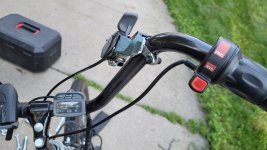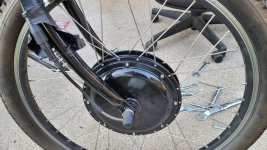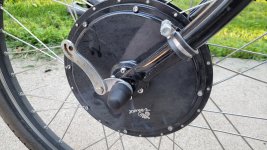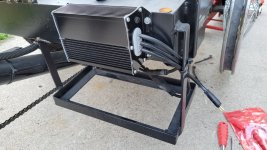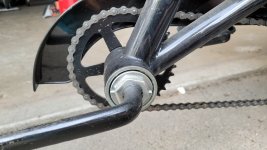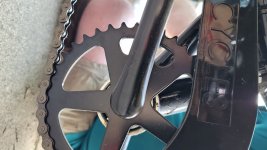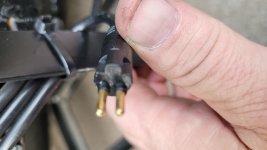Worksman_trike said:
Also, they are 1 piece Ashtabula cranks. Not sure if sensor can even be installed on this large bottom bracket shell.
There are a number of ways to install a simple pulse-output PAS sensor (often called cadence sensor, although few systems actually monitor cadence itself, most just detect if you are pedaling or not and engage motor at full power or speed of the chosen assist level)
Some have split magnet rings you can fit over the crankshaft, and you could DIY a mounting bracket for the sensor to put it in the right place to sense the magnets. Or put the magnets on the chainring itself and DIY the sensor bracket to read those.
If you want to install a BB-cartridge type PAS, you can get Ashtabula / OPC adapters to threaded "standard" BB-shell type components; the page below shows various instructions and info about those:
https://www.google.com/search?q=Ashtabula+%2F+OPC+adapters
If it can, than I might explore this. Of course I'd probably have to replace everything but the motor. Might lose the reverse as well, going by what you're saying.
You wouldn't necessarily lose the reverse, but it wouldn't work exactly the way it does now, for most controllers. It'd be lke I described before.
However, there is a way to add PAS of various kinds to it without changing (hardly) any part of the existing system, other than a bit of rewiring:
The Cycle Analyst v 3.x from Grin Tech (ebikes.ca) can be installed to take the PAS output (and throttle before it goes to the controller), and based on whatever modifiers you've setup for it, can create a throttle signal of the desired voltage range to drive the controller from PAS as if you were using the throttle. I don't think it would let the PAS emulate the reverse function, but you should still be able to use the throttle for that...but it might require a "bypass switch" to allow the original throttle signal to go to the controller instead of the CA's created throttle signal while using reverse. Might not be a big deal if you don't use reverse much, to flip a switch first; depends on usage scenario.
The CA also does actual pedal-controlled cadence-based assist, so you can actually control the speed of the motor (or it's power level, etc) by the speed of pedalling, unlike the vast majority of controllers. This is how I operate the SB Cruiser trike.
It will also read torque sensors to do the same job, if you need that.
Inside dimensions of battery tray are 11 7/8" wide x 6 3/8" deep. There is about 5 1/2" clearance to install batteries from the front. Less vertical clearance on all other sides. Does this telll a tale of a specific battery/batteries form factor?
there are a few pages with SLA battery sizes, such as a few of the hits here
https://www.google.com/search?q=size+of+sla+batteries
this is one of the more readable charts
https://www.batterysharks.com/12-Volt-SLA-Batteries-s/1213.htm
It looks like some of the 20-ish-Ah range sizes would fit a pair side by side in that space, but that's only 24V if they're seriesed. There may be other SLA combinations that would fit, too.
Did you find any label on the mounting side of the controller? (or on the endcap not visible in the pics).
Does this power connector have a name?
Probably a variation on the Higo/Julet; I don't know for sure. E-bikekit.com can probably tell you what it is and provide a matching connector, if they still use that one. If not, you can remove it and install a matching connector to whatever the battery you get already has.
Cheapest thing is probably to source a battery and see what's going to work.
Once you know what voltage the system is...otherwise you might not be able to use it with the existing controller and have to replace that, too...if the battery voltage is too high vs the original system design, then it may mean the motor at full throttle would be too fast (these types of trikes are often not stable above 10-15mph, sometimes less depending on design/geometry).


